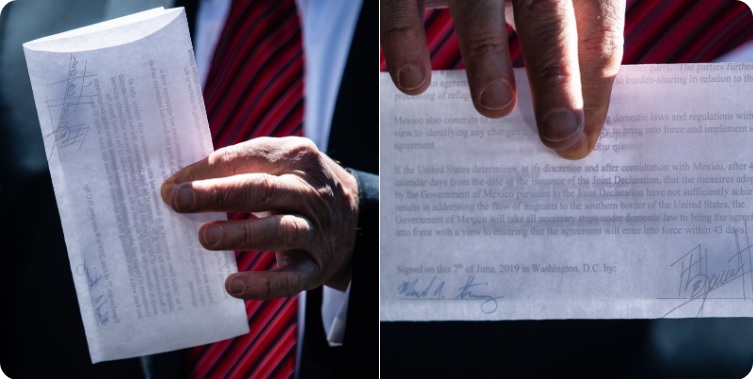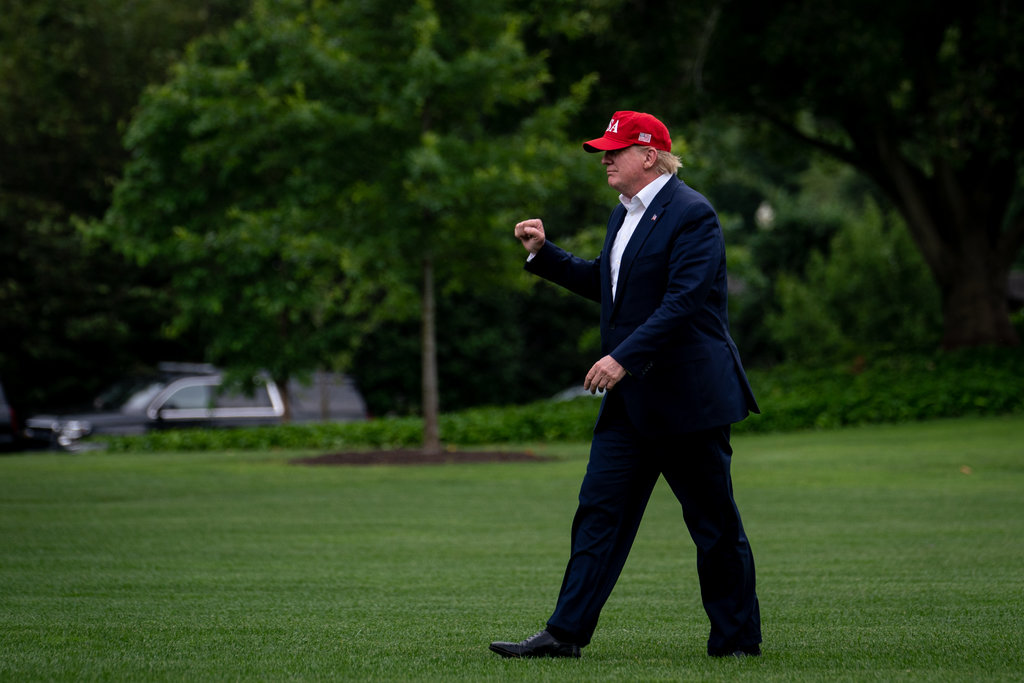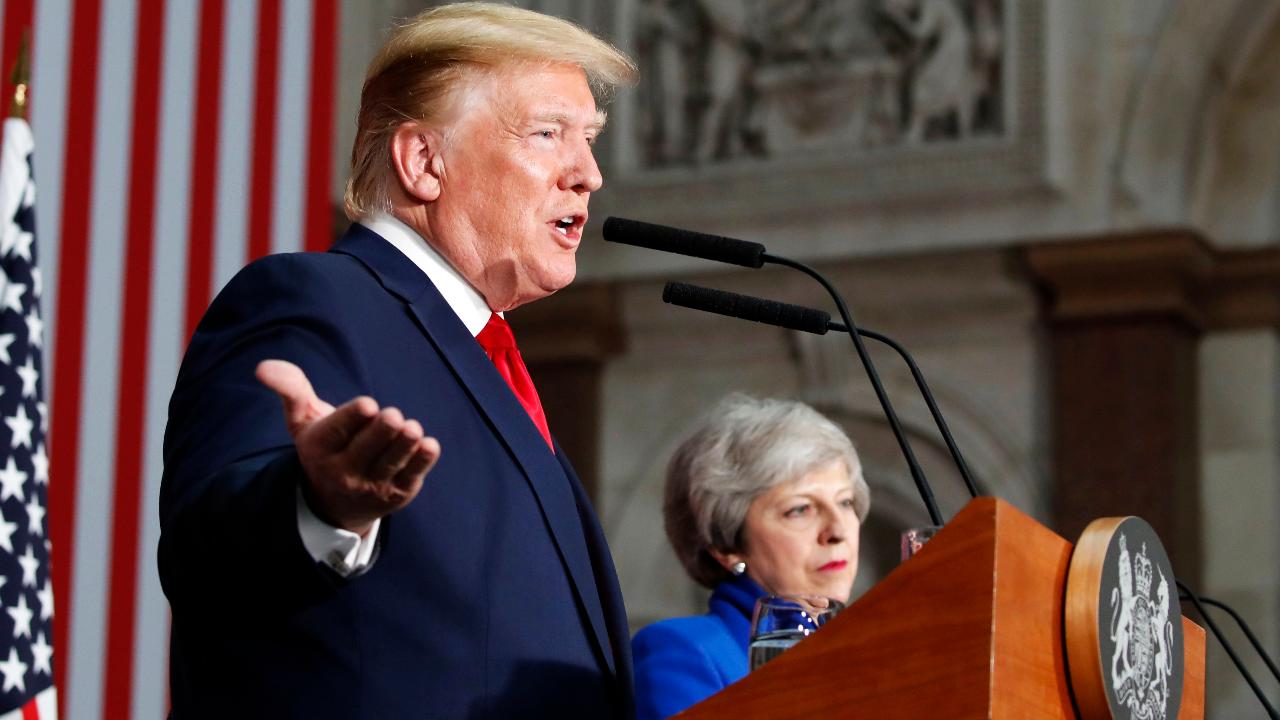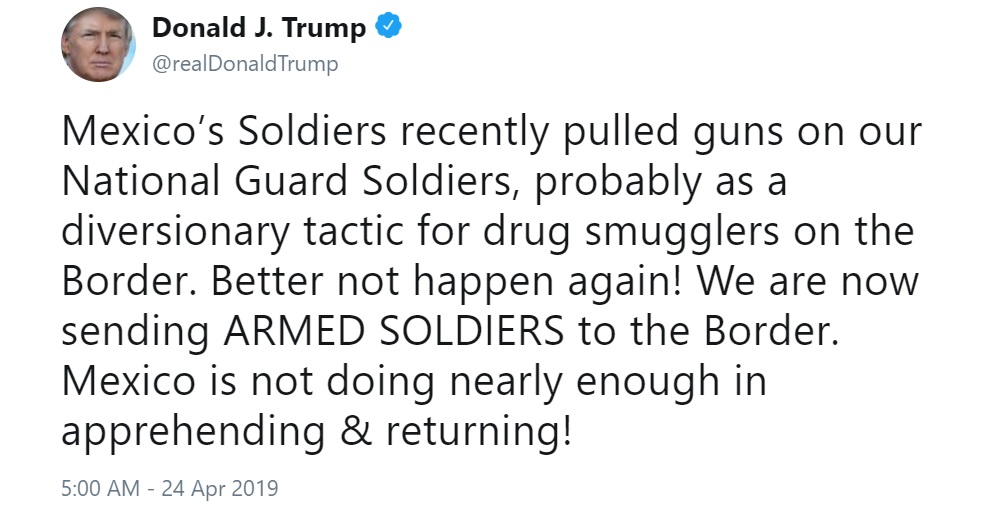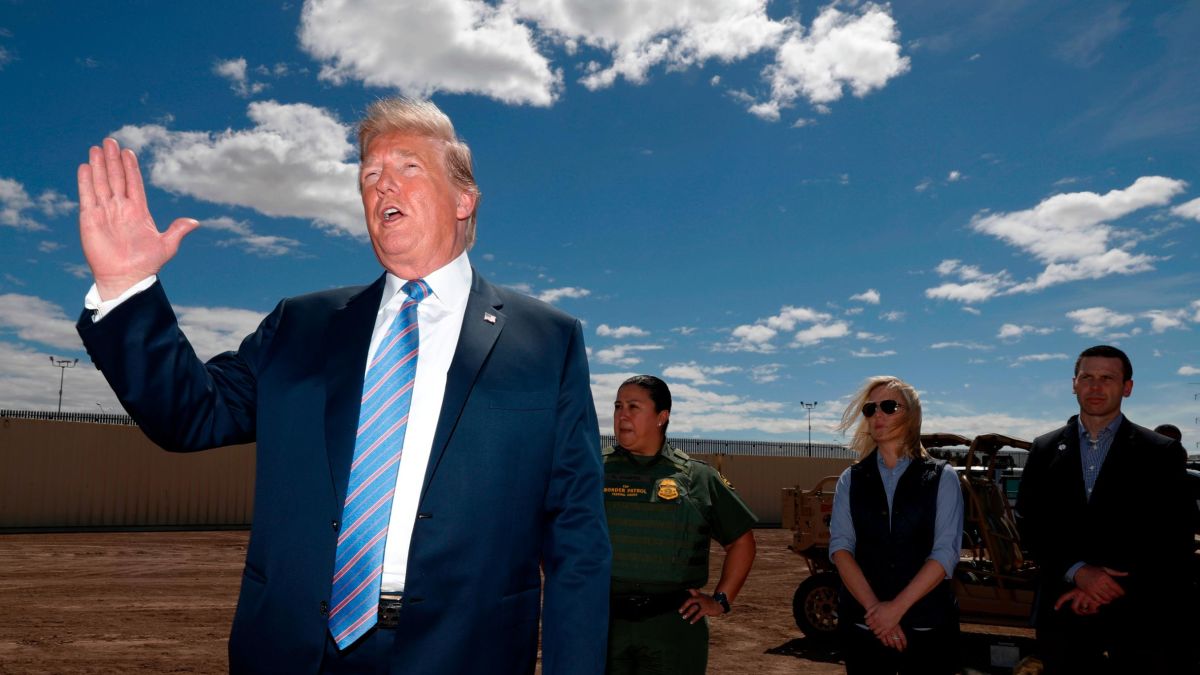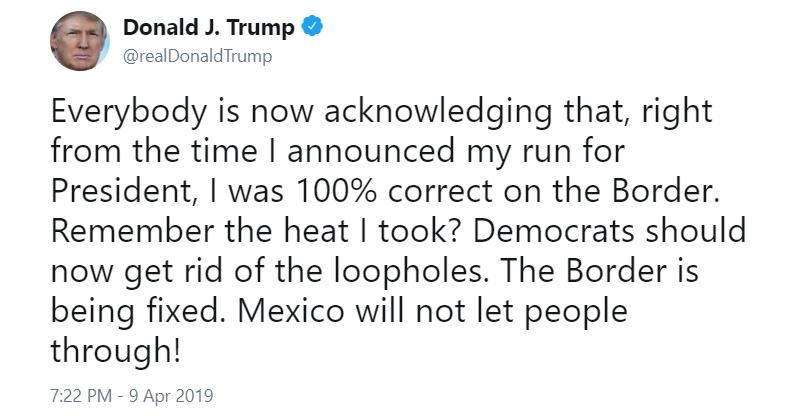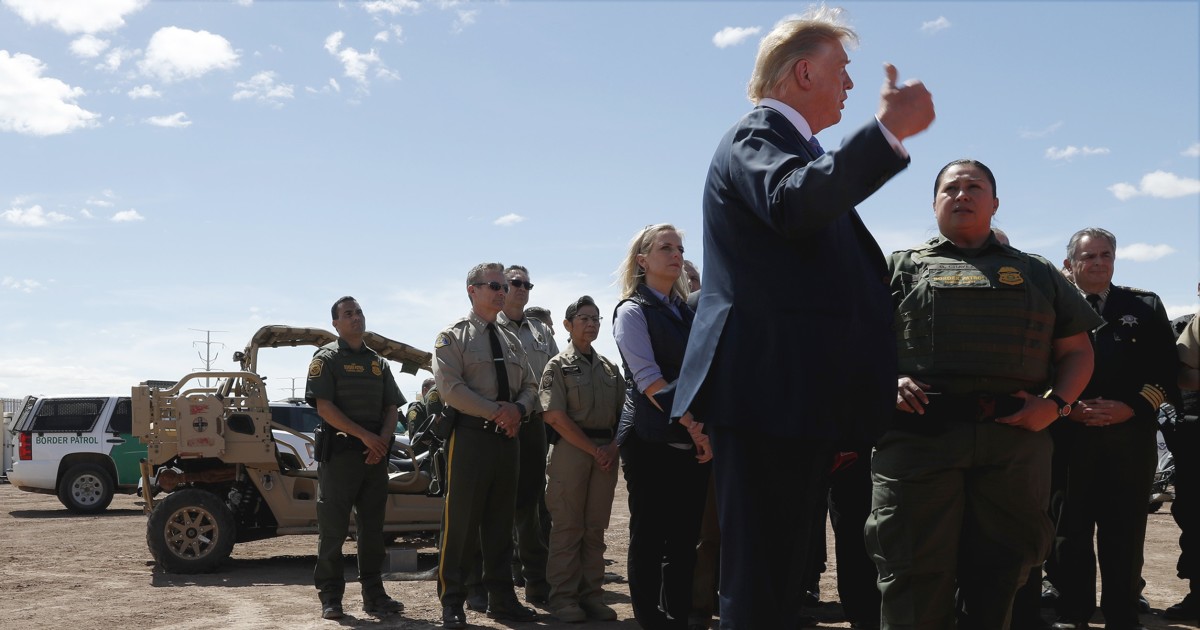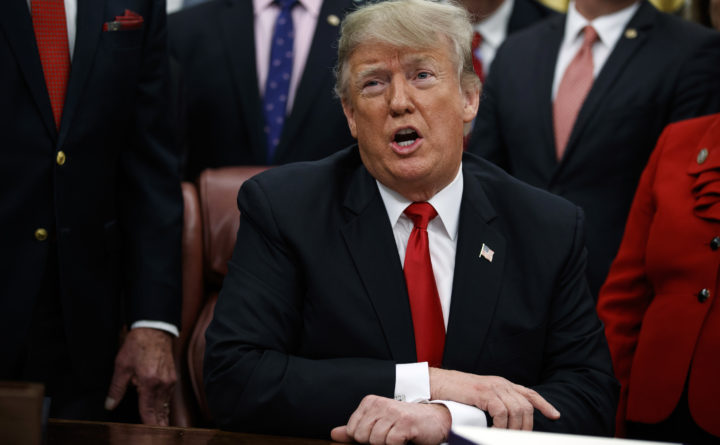President Trump rejected a plan from Democrats on Wednesday to reopen key parts of the federal government, as a meeting of the country’s top political leaders disbanded with no sign of progress toward ending the partial shutdown.
The president is demanding more than $5 billion to build a new wall along the U.S.-Mexico border. House Democrats plan to advance legislation that would reopen key parts of the government but deny Trump any additional money for a wall, as one of their first acts after they take control of the chamber on Thursday.
But Trump told congressional leaders he will not sign the measure, said incoming House Minority Leader Kevin McCarthy (R-Calif.), who attended the meeting.
“The president’s not going to sign it . . . Now’s the time to come together, find common ground and solve this problem,” McCarthy said. “I didn’t find the Democrats were wanting to negotiate today.”
Trump has invited congressional leaders back to the White House on Friday for more discussions. But neither side offered any indication that a deal was within reach.
The jostling from Trump and top Democrats reflects how Washington’s new balance of power will not break the impasse that has shuttered large parts of the government since Dec. 22. And with no obvious path to a compromise, Senate Majority Leader Mitch McConnell (R-Ky.) on Wednesday said the shutdown could drag on for “weeks.”
The 12-day government shutdown has entered a new and unruly phase. Before the meeting, Trump leveled a series of false claims about immigration and the federal budget. Democrats countered by accusing the president of intransigence and said they would not yield to his demands.
“We have given the Republicans a chance to take ‘yes’ for an answer,” incoming House Speaker Nancy Pelosi (D-Calif.) said after the meeting. Earlier, Trump said the shutdown would go on “as long as it takes.”
The shutdown began Dec. 22, and its effects are spreading, particularly in the Washington region. The Smithsonian Institution closed its museums and the National Zoo on Wednesday. Trash and human waste are piling up at national parks.
The District of Columbia has stopped issuing marriage licenses because of cutbacks to its funding, and the Internal Revenue Service, Securities and Exchange Commission, and a number of other agencies have suspended or scaled back a range of services for families and businesses.
As Trump and Democrats scrap over the wall, both sides have all the power they need to block the other. Democrats can use their House majority — or a Senate filibuster — to stall any legislation that includes additional money for a wall. Trump can veto any bill that doesn’t, and Senate Republicans have said they won’t advance any legislation that lacks the president’s blessing.
Trump wants $5.6 billion for the construction of 200 miles of wall along the Mexican border. Some Republicans have suggested he would be willing to accept a lesser amount, but he tried to dismiss this idea on Wednesday.
He also rejected the negotiating position of his own top advisers. Vice President Pence in December approached Democrats with a compromise offer of $2.5 billion for border security and wall improvements. But Trump on Wednesday said he would never accept that deal.
“Somebody said $2.5 (billion),” Trump said to reporters. “No. Look, this is national security we’re talking about.”
Democrats have signaled a willingness to approve $1.3 billion for border security as part of a broader spending bill, and a portion of that money could be used to replace and repair existing sections of wall and fencing. But they have drawn the line at the use of any additional taxpayer money for the construction of a new wall.
The president on Wednesday continued to advance false claims about where the wall money would come from and why it is needed.
He said the wall would be paid for by Mexico through savings to the United States under a new North American trade agreement. But the trade agreement has yet to be approved by Congress, and trade experts said such savings are uncertain.
He also wrote in a Twitter post that “Much of the Wall has already been fully renovated or built.” This is also not true. Some wall and fencing has been replaced during the Trump administration, but there is little evidence that new barriers have been established along the 2,000-mile border.
And in remarks to reporters during a televised cabinet meeting, Trump estimated there are between 30 million and 35 million undocumented immigrants in the United States. That number is roughly triple the estimate his own Department of Homeland Security offered several weeks ago.
Pelosi is under extreme pressure from liberal groups not to give in to White House pressure for any wall funding. McCarthy said Trump wanted to have the next meeting on Friday, after leadership elections in Congress, and Trump has suggested Pelosi is opposing money for the border wall because she is worried about losing support from liberals.
But Pelosi has rejected the notion she is opposing the wall for purely political purposes, and many Democrats have rallied to her defense.
Throughout the 2016 presidential campaign and earlier in his presidency, Trump told voters he said he would build a concrete wall, 30 feet tall in most places, to keep people out. He also promised Mexico would pay for the wall. Since becoming president, though, he has shifted this promise, saying the money must come from U.S. taxpayers.
During the shutdown, Trump has offered much different descriptions of the barrier he wants to build along the Mexico border. He has said at times it would be a traditional wall, but he has also rejected the idea of a wall and described it as a series of “steel slats.” He recently offered a picture on Twitter of vertical posts with pointy tips, but other government officials said they were not planning to erect anything that looked like this.
The shutdown began after Trump rejected bipartisan congressional efforts to fund many operations through Feb. 8, insisting that any deal must contain wall money. His demand infuriated many Republicans who had been working to avoid a shutdown, but most have followed his lead and are insisting Democrats broker some sort of compromise.
Democrats on Wednesday sought to ramp up pressure on Republicans to reopen the government, even suggesting they push off a debate about the border wall to a later date.
“I said, ‘Mr. President, give me one good reason why you should continue your shutdown,’” Senate Minority Leader Charles E. Schumer (D-N.Y.) said after the White House meeting. “He could not give a good answer.”
Two congressional aides briefed on the exchange said Trump told Schumer the president would “look foolish” if he backed down now. White House officials didn’t respond to requests for comment on this exchange.
Despite the far-reaching impacts of the shutdown, much of the federal government has not been touched. Major agencies like the Pentagon and the Department of Health and Human Services have already been funded through the end of the fiscal year, Sept. 30, thanks to spending bills passed by Congress last year.
House Democrats on Thursday plan to pass two bills: one to fund the Homeland Security Department at its current level through Feb. 8, which would continue the $1.3 billion in border barrier funding; and the other to fund the rest of the government through Sept. 30, at levels negotiated on a bipartisan basis in the Senate.
That would make it possible for McConnell to send Trump a bill to reopen most of the government, while setting aside the fight over the wall.
Trump and some conservative Republicans have said the fight over wall funding is necessary now because it’s the best point of leverage, believing Democrats will rush to fund government programs and offer up some money in return for GOP votes. That has proved not to be the case.
Wednesday’s meeting was crafted by the White House as an opportunity for DHS Secretary Kirstjen Nielsen to brief Democrats on problems along the Mexico border, but Democrats quickly interjected and said they wanted to talk about efforts to reopen the government.
The last time Schumer and Pelosi met Trump at the White House, on Dec. 11, it turned into a bizarre televised squabble during which Trump claimed he would be “proud” to shut down the government over the wall and insisted he would take ownership of any shutdown. The agencies that are unfunded and in shutdown mode include the Homeland Security, which pays for the wall; as well as the departments of Agriculture, Justice, Interior, Transportation, State, and Housing and Urban Development. NASA is also partially shut down, along with the National Park Service and an array of smaller agencies.
Some 800,000 federal workers are affected, including around 350,000 who have been furloughed while the rest stay on the job wondering whether they will end up getting paid. In past shutdowns, Congress has approved retroactive pay once the impasse has been resolved. But the many government contractors affected may never make up their lost paychecks.
The current shutdown is the longest since a 16-day partial shutdown in 2013 over the Affordable Care Act.
[Washington Post]
